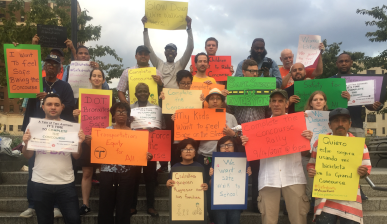Coming Soon: Full Report on Local Retail Impact of Sustainable Streets
At the beginning of the National Association of City Transportation Officials’ “Designing Cities” conference last week, NYC DOT released new data showing that retail and restaurant sales have tended to increase after streets are redesigned with Select Bus Service, protected bike lanes, and pedestrian plazas. It turns out that there’s more information on the way. Last week’s document was a teaser for a more comprehensive report due out in the next few months.

DOT has hired consultant Bennett Midland to measure not just sales tax collections, but also commercial rents and property assessments after the completion of sustainable streets projects. The news came during a panel on the economic impact of transportation policy at the NACTO conference, where Bennett Midland’s Eric Lee discussed some of the report’s preliminary findings.
The research dispels a myth often employed by opponents of livable streets projects, who claim that plazas, bike lanes and a reduction in the number of parking spaces will be crippling blows to small businesses.
“We can say in New York today that bicycle lanes, pedestrian improvements and plazas — the removal of travel lanes and parking — do not do damage” to retail sales, Lee explained. Although the research does not say that bike lanes and plazas directly cause increased retail sales, Bennett Midland studied 11 retail corridors with street improvements and found that eight have bigger sales increases than nearby commercial streets and the borough-wide average.
The sales tax collections data used for the study was acquired from the Department of Finance. Now that DOT has established a channel with the Department of Finance and has begun using research service CoStar for information on commercial rents and vacancies, economic data on the impact of street design changes may make more appearances in the agency’s future presentations, alongside information on safety metrics like traffic injuries and the incidence of speeding.
